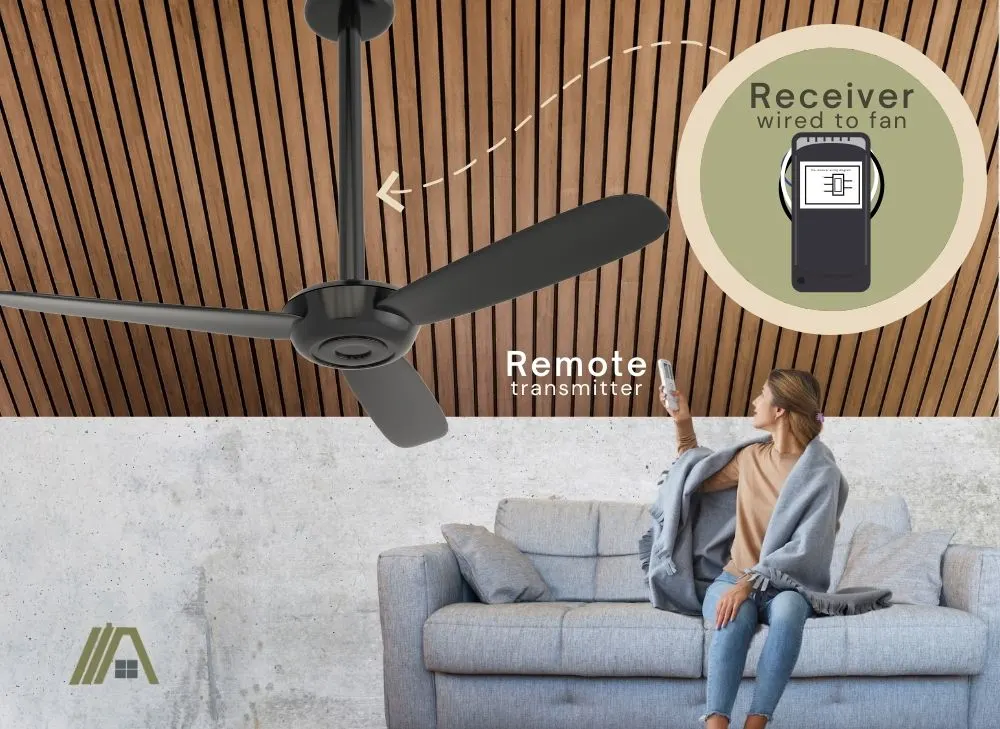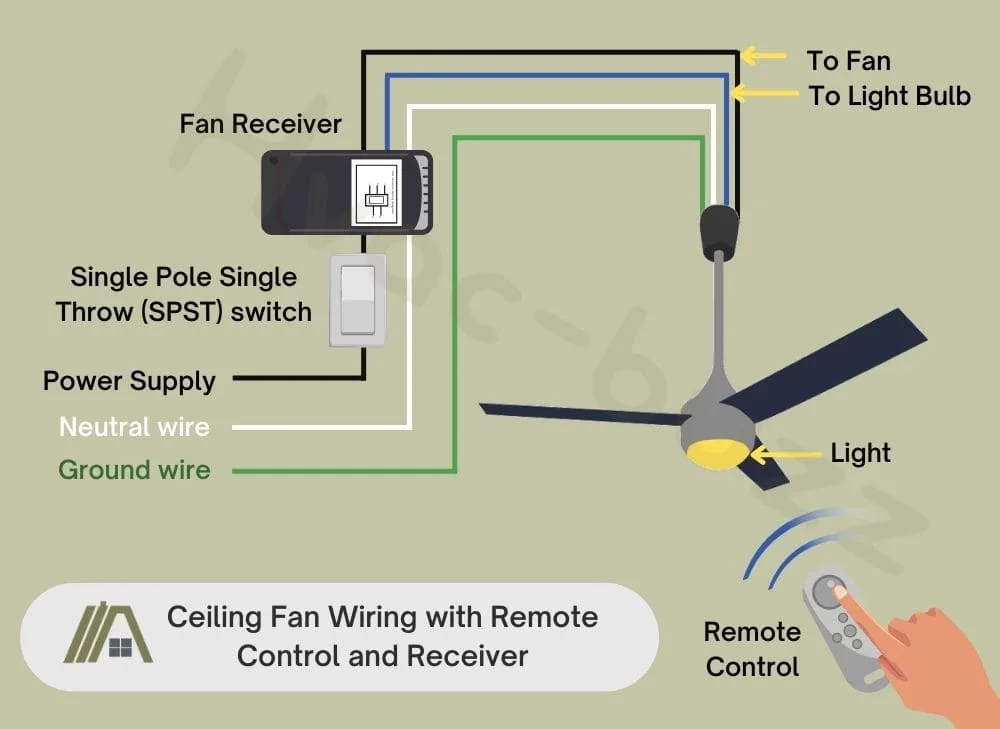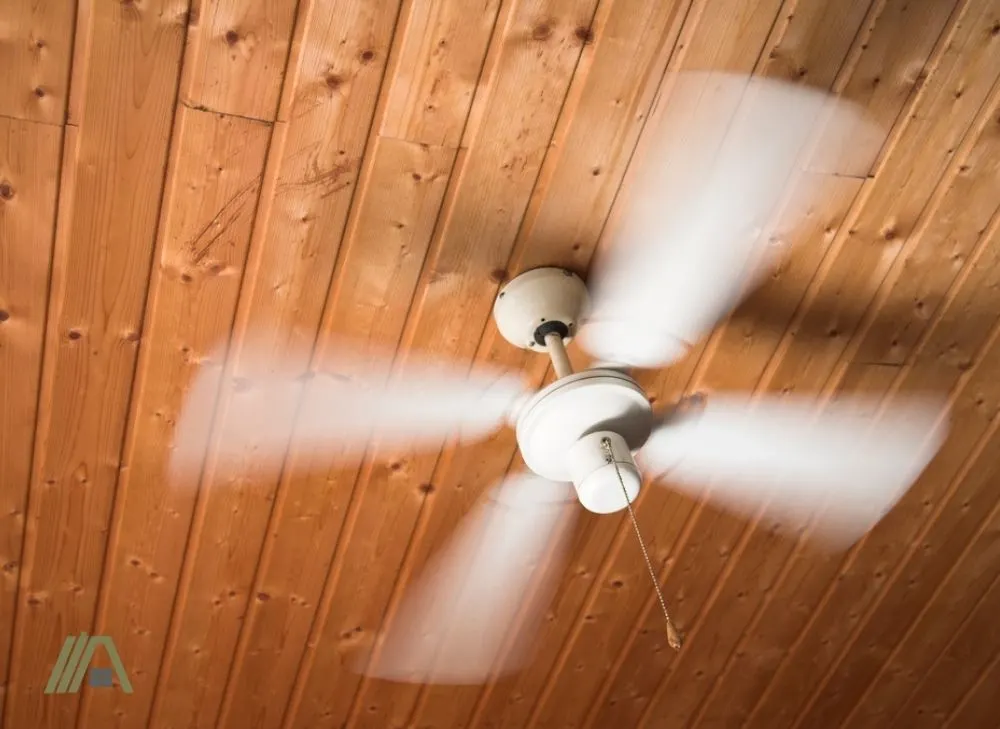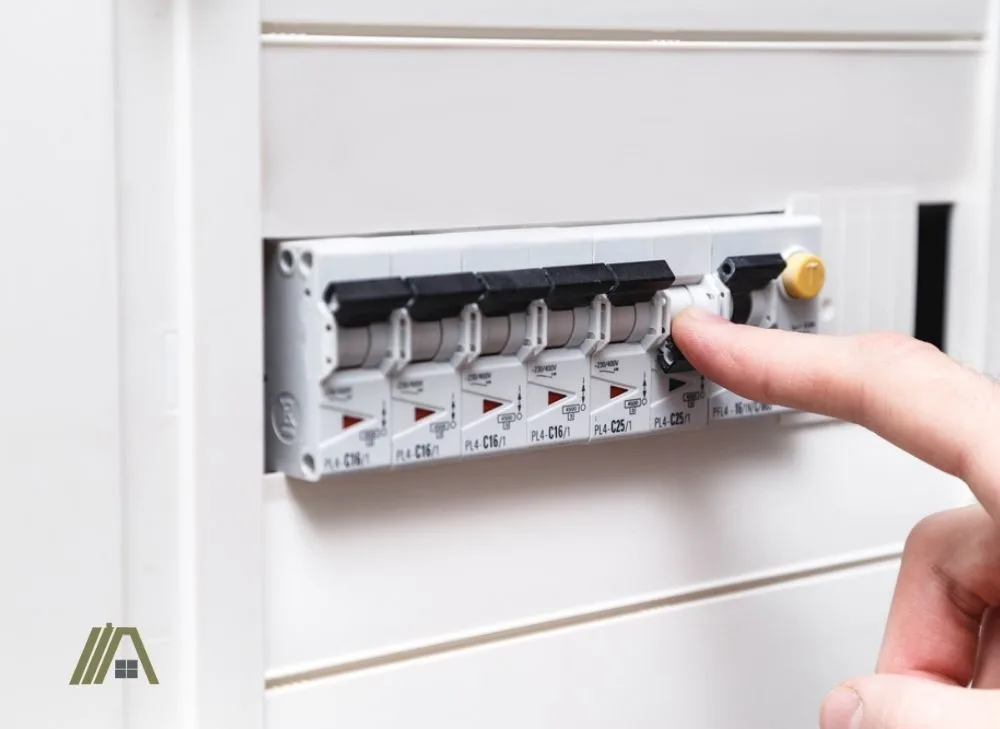Operating a ceiling fan seems fraught with issues. Chains break or get clicked by accident when the wall switch is off, which means you have to go through the whole clicking cycle just to reset them so that the switch will do what you want it to do. I know these are minor issues in the grand scheme of things, but I can’t be the only one this bothers!
“Remote-controlled ceiling fan” was a phrase that entered my life like an epiphany and I couldn’t wait to get stuck into researching how these worked, especially when I found out that I could install the remote system on my current fan and I didn’t need to purchase a whole new unit.

Remote-controlled ceiling fans use a transmitter and a receiver to relay information from the remote control to the fan’s power supply. The frequency of the transmission between the transmitter (the remote) and the receiver (in the fan and connected to the power supply) determines how the fan responds.
Remote Controlled Fans Have Receivers
Remote-controlled ceiling fans have a transmitter and a receiver. The remote control is the transmitter and it communicates with a receiver that is wired into the ceiling fan.

In most cases, the receiver is wired to the power supply and enclosed in the ceiling fan’s collar with all the wiring.
This wiring setup means that when you press a button on the remote control, the receiver is triggered to exert its preset power over the hot wire, which tells the ceiling fan what to do. We will go into this in more detail, but first—wiring.
Wiring of Remote Controlled Ceiling Fan
Ground Wires
Ground wires, also called earth wires, are important because they provide a safe path for excess electricity to flow. These wires create a low-impedance path for displaced electricity to “ground”, effectively neutralizing the electrical current and greatly reducing the risk of electrical accidents and injuries.
Typically green in color (except for the house ground wire, which is often a bare copper wire), ground wires should all be connected to one another.
The receiver is not connected to the ground wires because ground wires are designed to carry excess electricity away from the power supply line.
Neutral Wires
Neutral wires are typically white and they connect the circuit back to its original power source, completing the electrical circuit.
The neutral wire of the fan, the receiver wire, and the “house” neutral wire are all connected together. For reference, the “house” neutral wire is the one that is connected to your home’s wiring.
Power Supply Line
The fan’s receiver is powered by the supply line or hot wire, which is typically represented by a black wire.
After the remote transmitter sends a signal, the receiver allows the current provided by the supply line to enter the fan and achieve the desired function. Alternately, it blocks the current to turn the fan off.
Generally, the receiver has as many output wires as functions. For example, if it is just a fan, then there is likely to be only one output wire. If the fan also has a light, then there will be two output wires.
Output Wires
Output wires lead out from the receiver and connect to the wires of the fan. Typically, there is at least one, which operates the fan. But if there is a light as well, then this will be controlled with a separate wire connecting the receiver to the light.
How the Transmitter and Receiver Communicate
The receiver and transmitter communicate via a frequency. The remote control sends out a signal at a certain frequency, and the receiver picks up that signal using its antenna.
The receiver then decodes the signal and sends a corresponding signal to the ceiling fan by allowing the current from the power supply line to enter the appropriate output wire or by preventing this current from flowing.
The ceiling fan responds, causing the blades to rotate or stop. If the fan has a light, the receiver can also send a signal that will turn it on or off.

In order to communicate, the transmitter and receiver must be programmed to the same frequency. Most remote-controlled ceiling fans come with a receiver that can be programmed to multiple frequencies so that it can work with multiple remote controls.
There is usually a switch or dip-switch on the receiver that you can use to set the frequency. You will need to consult your ceiling fan’s documentation to find out which position on the switch corresponds to which frequency.
As for the transmitter, most remote controls come with a default frequency that they operate on. If you want to program the transmitter to a different frequency, you will need to consult your ceiling fan’s documentation to find out how to do that.
How is the Fan Speed Controlled?
If you are like me, then you might be wondering how the remote is able to adjust the speed of the fan if there is only one wire connecting the fan to the receiver (and, thus, to the power source). Surely, this means you can only either have it on or off.

Well, the answer to this is actually quite logical. Just as with a dimmer switch or a 3-way light, the amount of current being fed to the fan from the receiver is adjustable.
When you adjust the speed of the fan using the buttons on the remote, a signal of a certain frequency is sent to the receiver. This signal is interpreted according to the preset functions. In other words, the receiver is programmed to know that a particular frequency is linked to slowing or speeding the fan up in certain increments each time the signal is received.
Once the signal is correctly interpreted, the receiver adjusts the amount of current flowing to the fan to yield the desired result. Less current means the motor turn more slowly; more current means that it rotates faster.
Can You Make Any Fan Remote Controlled?
In general, yes. You can buy universal kits at any big box store that will allow you to rewire your fan to be remote-controlled. Universal kits include a remote and a receiver that you install inside the fan. However, before purchasing a universal kit, make sure that your ceiling fan’s canopy is big enough to house the receiver.
- ☞Easy Installation - Installation of the Universal Ceiling Fan Remote Controls Kit is a breeze and the looks of the remote are second to none. No need to take off the light kit and blades. only 5...
- ☞Universal Fit Ceiling Fan Add On Remote - No more getting up to turn the lights/fan off after reading in bed/sleeping! It adds remote control compatibility to any fan. LPHUMEX Universal Ceiling Fan...
- ☞Good Signal - No problem with signal, you can adjust the fan from another room, or even downstairs.
- ☞Multi-Fuctions - Includes separate buttons for 3 fan speeds,designed to separately ceiling fan remote control speed and light; Includes wall cradle for handheld remote control,This kit converts...
- 【Universal remote kit for 3-wire fans】Adds remote function to most of ceiling fan. It is a kit including remote and receiver. Compatible with Hunter and any other brand of 3-wire AC fan, but not...
- 【Compact Size, Easy to install】Due to the small size receiver, it can be easily and fastly installed into any fan. Wall mount and wire nuts included. Please check the receiver size and fan canopy...
- 【RF remote, Multi-function】Control fan and light individually. Let the fan has 3 levels speed (Hi-Med-Low-off) and 4 timing off function (1 hour to 4 hours). Lights turned on and off, but not...
- 【Excellent operating experience】Compare to others, using this kit, the lights turn on instantly without delay, the fan speeds changed quickly, and the control distance is far away.
Last update on 2024-03-27 / Affiliate links / Images from Amazon Product Advertising API
Sometimes, LED bulbs won’t work well with a remote control ceiling fan, so you should check this as well.
If you have an older ceiling fan, you may need to rewire it to accommodate a remote control. This is not a difficult process, but it will require some basic electrical knowledge. You’ll need to know how to connect wires and wire the remote control receiver to the fan.
Some ceiling fans may be more difficult to wire than others. If you’re unsure if your ceiling fan can house a receiver, or if you don’t feel confident in your wiring skills, it’s always best to consult a professional electrician. They will be able to provide guidance and also rewire your ceiling fan to accommodate remote control function if that is what you desire.
Power to Fan Not Controlled By Remote
Remember, the remote and receiver do not control the power supply to the fan unit as a whole (including the receiver). Yes, it controls how much goes to the fan, but if you were to turn the fan off with the remote and fiddle around with the wiring, you would be in for a rather nasty surprise.
To safely work on the remote-controlled ceiling fan, you will need to disconnect it from the power supply. Some people say that turning it off at the wall is good enough, but I say rather be safe. If you have a wall switch, turn this off, but also cut the power at the breaker box.

On the upside, the fact that the remote does not control the power going to the whole fan unit means that you can still control the fan if the remote goes missing or the batteries die and there are none rolling around in your junk draw to save the day.
Now that you know how they work, why not read through Remote Control Ceiling Fan Will Not Turn Off to find out how to fix them when they stop working!
Sources
https://diy.stackexchange.com/questions/139078/neutral-and-ground-wires-for-ceiling-fan-wall-control
https://www.universalfans.com.au/blog/ceiling-fan-remotes/
https://www.delmarfans.com/educate/basics/how-to-change-remote-frequency/
https://www.familyhandyman.com/project/how-to-install-a-ceiling-fan-remote/
https://hamptonlightingadvice.com/troubleshooting-remote-controls/
https://www.rampfesthudson.com/where-does-red-wire-go-on-ceiling-fan-with-remote/


